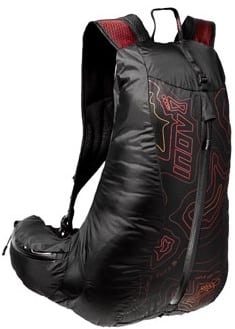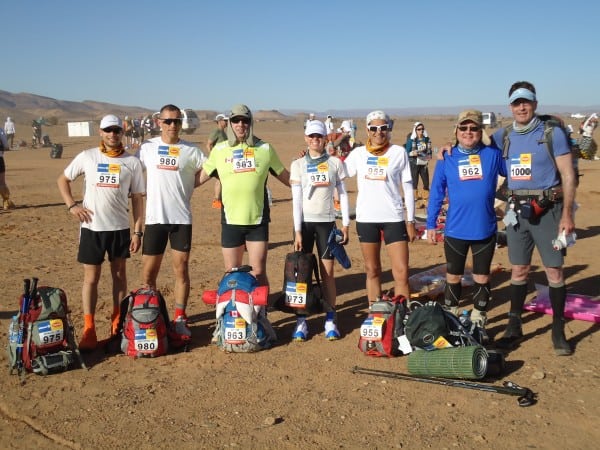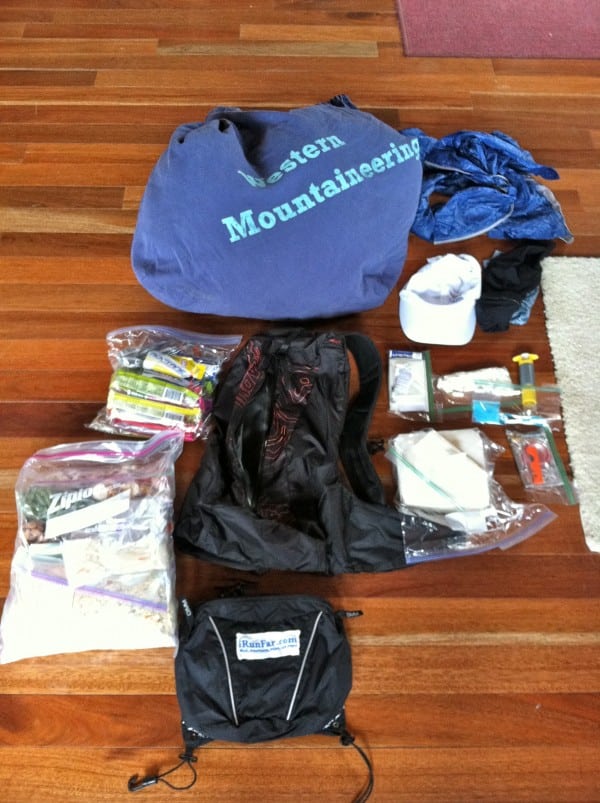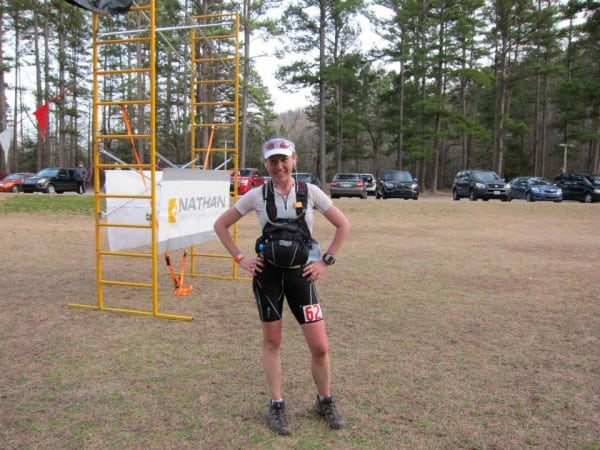 My modus operandi when it comes to gear is to find something that I love, then use it until it’s in splintered bits and pieces. This stems from both a spartan life philosophy and the fact that I develop relationships with gear related to the experiences we endure together.
My modus operandi when it comes to gear is to find something that I love, then use it until it’s in splintered bits and pieces. This stems from both a spartan life philosophy and the fact that I develop relationships with gear related to the experiences we endure together.
Contrary to my usual gear approach, I’ve now raced the Marathon des Sables (MdS) three times and used three different packs. In 2009, I used and loved the Inov-8 Race Pro 22 (review). After running the MdS that first time, I realized that I didn’t need to carry 22 liters worth of gear, so I chose and dug running with the Terra Nova Laser 20L (review) for the 2010 MdS.
At the 2010 MdS, I learned that I could still carry less gear. I also learned that I wanted to distribute some of my pack’s volume and weight to the front of my body. I achieved that at the 2012 MdS using the Inov-8 Race Elite 15 on my back and a modified OMM Trio, a four-liter front pack. This created a bomber sub-19-liter MdS kit.* (I modified the Race Elite 15 to make it a little smaller. See my notes on stripping the pack down below.)
*Note that a kit of this small size is not for everyone running the MdS. I’m a small woman looking to finish as high in the rankings as I can, so keeping my pack’s volume and weight as low as possible is important to me. In general, I think most folks running the MdS should strive for a 25-liter kit. If you’re planning to carry more than 30 liters, you’re bringing unnecessary stuff and you’re absolutely going to be hindered, not helped, by all that weight.

The author holding the Inov-8 Race Elite 15 and her Tent #56-mates before the start of the 2012 Marathon des Sables. Photo: Greg York
The Inov-8 Race Elite 15 was designed to be an ultralight running or hiking pack made for long mountain races or training days. Its key features include:
- 15 liters of storage space;
- a 285-gram advertised weight (mine weighed 289 grams out of the box);
- a waist belt with two storage pockets (one that’s water-resistant and another that’s stretchy mesh);
- very lightly padded shoulder straps with a sternum strap that may be adjusted to four different positions; other attachment points for water bottles, a front pack, or an accessory pocket; and an emergency whistle; and
- a water-resistant main compartment with a vertical access zipper, an internal water bladder sleeve, and two adjustable straps for compression.
Why I dug the Race Elite 15 as my MdS running pack can be boiled down to one word: fit.
Its tall, narrow, and shallow design distributes the pack’s contents and, therefore, weight along the length of my torso and close to my body. The closer you can get your pack’s weight to you body, the closer-to-normal your running form will be. Also, between its positioning on my shoulders and the manner in which it cinches to the smallest part of my torso, I can run with no bouncing. No bouncing means no chafing and no lost momentum from you going in one direction and the contents of your pack going in another.

Rachid El Morabity and the author running in the Sahara before the MdS. The photo shows how the Race Elite 15 rides close to and along the length of the user’s torso. Photo: Lhoucine Akhdar
The second most important-to-me feature of the Race Elite 15 is its ultralight design but bulletproof construction. I don’t need extra pockets, zippers, compression straps, or volume. I want simple and super-light as well as 100% reliable. I get all that from this pack.
Let’s talk details, the sternum strap first. Inov-8 has updated their sternum-strap adjustments from earlier models. Previously, the sternum straps could be moved up and down via a plastic, sliding bar. While this made for fast adjustments, those adjustments couldn’t be locked in and the strap sometimes slid up or down. In the current Race Elite models, you can adjust your sternum strap into one of four specific, locking spots, allowing for a custom fit and negating any chance of the sternum strap moving without your approval.
The two waist pockets are identical to previous and other Inov-8 pack models. The water-resistant pocket makes a great pocket for placing materials you want to keep dry (and debris-free), like a small camera or iPhone. The stretchy mesh pocket is perfect for stashing on-the-go food. I can get 800 calories in of gels, bars, and gel blocks in the pocket without stressing it.
The internal bladder sleeve holds vertical bladders of up to three liters. Since the pack has no back pad, having a bladder against one’s back provides both padding and structure. While I trained with a bladder in that sleeve, I didn’t use one in racing. Without the bladder, the pack essentially conforms its contents to the shape of my back, which is also perfect.
The main compartment has two small, adjustable straps for compression on its top and bottom. I found the top compression strap to be useful when the pack wasn’t full. I never needed the bottom compression strap, though, as having just a few things inside the pack filled out the full width of the pack’s base.
I’m returning to the 2013 MdS and I plan to carry the Inov-8 Race Elite 15 along with a front pack. I don’t know if the OMM Trio will perfectly suit my needs (see my explanation of using the OMM Trio below), but I’ll be seeking something very close to it.

For anyone who’s uber-curious, here’s everything the author brought for the 2012 MdS, including the Inov-8 Race Elite 15.
Notes on Using an Ultralight Pack
At present, I’ve trained and raced about 600 miles with this pack (including hand-washing it three times) and it’s almost as good as new. That said, an ultralight life must be a careful life. Ultralight packs are made of lighter materials that can rip, crack, or break easier than their weight-ier, beefier cousins. Operate the zipper with intention. Try not to drop the pack around with too much gusto. Avoid letting the pack contact sharp surfaces. Give it the care it deserves and it’ll serve you well for years.
Notes on Stripping Down the Inov-8 Race Elite 15
I’m a neurotic gram counter, at least when it comes to building my kit for racing the MdS or fastpacking with an ultralight pack. As I said before, I’m a little woman and I like to move fast. Grams count. Here’s how I modified the Race Elite 15 to make this already ultralight pack even lighter:
- Removed bottom compression strap on main compartment;
- Cut out internal-bladder sleeve from main compartment;
- Cut off both waist pockets (Recall that I used this pack in conjunction with a front pack, so I didn’t need the pockets.); and
- Cut down all the extra lengths of shoulder, waist, and sternum straps.
My Race Elite 15 came out of the box at 289 grams. She weighed in a svelte 225 grams after this work, for 64 grams of weight saved.
Notes on Using the OMM Trio Front Pack

Here’s the author finishing one of the stages at 3 Days of Syllamo carrying her MdS kit as training. This photo is an example of how using a back and front pack promotes a natural running form. Photo: Travis Liles
While this is a review for the Inov-8 RaceElite 15, a couple of you might be curious about the OMM Trio as a front pack for the MdS or other uses. I modified my Trio by getting rid of the map case and sewing in means for the pack to carry two of the 1.5-liter water bottles issued by the MdS race administration at the race’s water checkpoints.
With a four-liter front pack, I kept the most important tools of each running day at close hand, including food, salt, the roadbook containing each stage’s route description and direction-of-travel bearings, and my iPod. Because the pack was four liters, I also carried other things that I didn’t use while running, to help distribute weight on both the front and back of my body. With the Trio modified to carry the race-administered water bottles, I carried either one or two 1.5-liter water bottles.

The author trains with her MdS kit at 3 Days of Syllamo this spring. This photo shows how the OMM Trio has been modified to carry 1.5-liter water bottles (Travis Liles photo credit).
A four-liter front pack, I learned, holds the perfect volume and weight of material, in terms of putting weight on the front of my body and keeping my running form near to normal. However, since the Trio has just one pocket, my racing materials became mixed with other stuff I was storing in the front pocket, making the race materials a challenge to access. In the end, I wish the Trio would have had a smaller, separate pocket into which I could store stuff for each stage of running separately from other items I carried in it. I also learned that this set-up struggled a bit with running over 10 kilometers per hour. At that speed, the water bottles bounced too much in the front pack.
